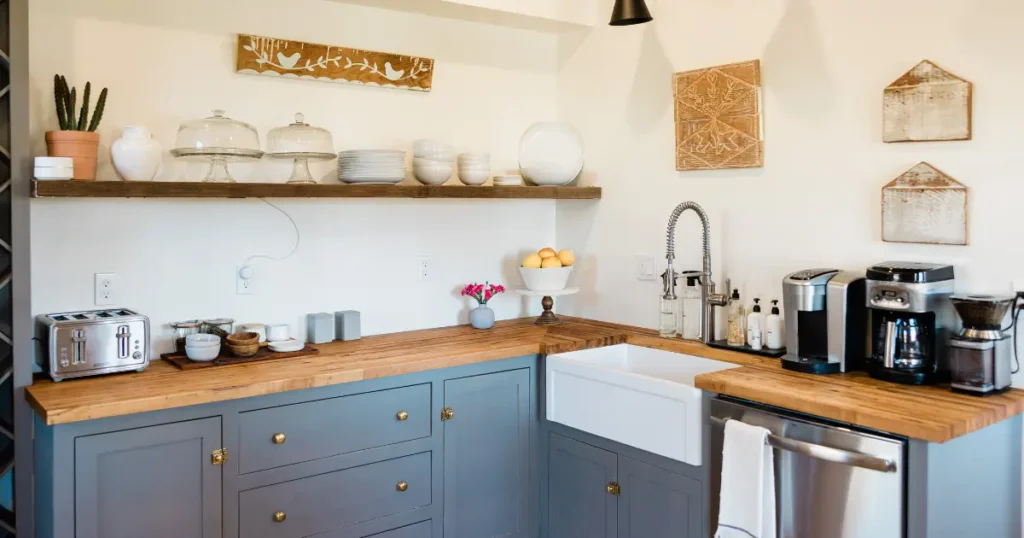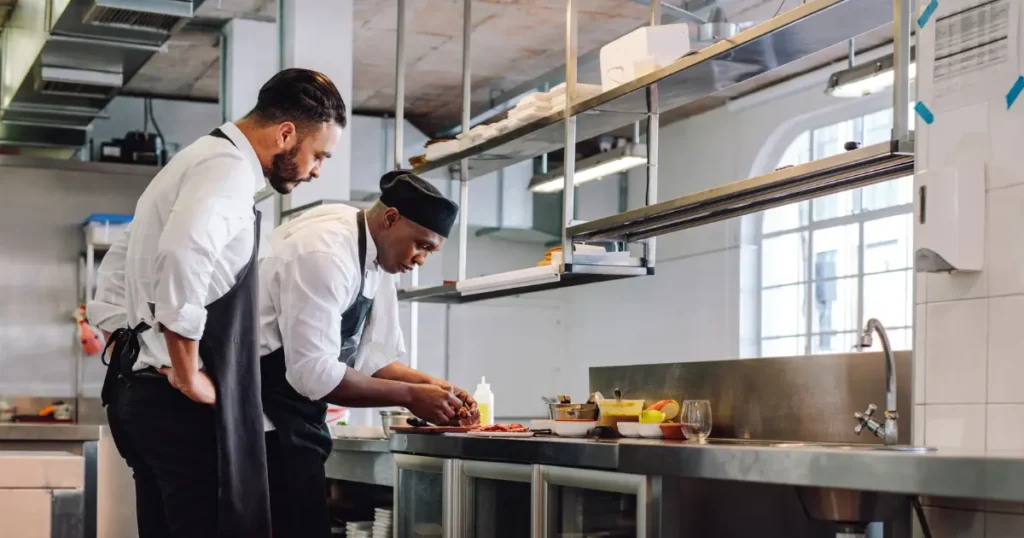Kitchens have always been the heart of any home or commercial space. The modern kitchen, with its sleek appliances and highly efficient workflow, is the result of centuries of innovation and adaptation. From the humble hearth to today’s state-of-the-art commercial kitchen designs, the journey has been one of incredible evolution. So how did we get here? Let’s take a look at the fascinating history of kitchen design and explore how the layout and function of kitchens have evolved over time.
Early Kitchens: A Central Hearth
In ancient times, the kitchen was little more than a hearth or open fire pit, usually situated in the centre of a communal space. Families and communities gathered around this hearth, not only to cook but to stay warm. The focus was on functionality, with little to no separation between cooking and living spaces. There were no defined layouts, no designated workstations, and certainly no streamlined processes. Everything was done in one central area, with large pots hung over an open flame.
For thousands of years, this central hearth served as the nucleus of household activity. However, as societies advanced, so did the concept of the kitchen. The Renaissance period, for example, saw the introduction of wood-fired stoves and the use of specialized cooking tools, signalling the start of more structured kitchen environments. But it wasn’t until the 19th century that kitchen design truly began to evolve in more organized ways.
The Birth of Modern Kitchen Design
The 20th century marked a monumental shift in the way kitchens were designed and utilized. The Industrial Revolution brought about mass-produced kitchen appliances, and with them, the idea of a more formalized kitchen layout. It was during the 1920s that architect Margarete Schütte-Lihotzky developed the “Frankfurt Kitchen,” often regarded as the precursor to modern kitchen design. The concept behind the Frankfurt Kitchen was to maximize efficiency and reduce the time spent on household chores. This was achieved through a carefully planned, compact space where everything the cook needed was within arm’s reach.

The kitchen was no longer just a place for cooking—it was now a well-organized, purpose-driven space. This concept soon spread to commercial kitchens, where the need for efficiency was even greater. By the 1950s, commercial kitchen design started to focus on the ‘work triangle’—an arrangement that placed the sink, stove, and refrigerator in close proximity to streamline the cooking process. This approach revolutionized not just home kitchens but also professional culinary environments.
The Rise of Commercial Kitchen Design
As the food service industry expanded in the mid-20th century, the demand for larger, more efficient commercial kitchens grew. Unlike home kitchens, commercial kitchens had to accommodate more complex workflows, multiple cooks, and larger quantities of food preparation. This led to the development of specialized zones within the kitchen, such as prep stations, cooking stations, and plating areas.
Fast forward to today, and the modern commercial kitchen design is a highly sophisticated affair. With a focus on ergonomics, sustainability, and hygiene, these kitchens are designed to optimize every square inch of space. The use of advanced materials, such as stainless steel, ensures that surfaces are easy to clean and durable enough to withstand heavy use. Equipment is often customized to fit the specific needs of the restaurant or food service operation, ensuring that everything from refrigeration to cooking units functions seamlessly together.

Moreover, technology has played a significant role in the evolution of kitchen design. Smart appliances, digital inventory management systems, and even automated cooking devices are now common features in commercial kitchens. The goal is always the same: to increase efficiency, reduce waste, and create a safer, more streamlined work environment.
Sustainability and Modern Kitchen Design
In recent years, the focus of commercial kitchen design has shifted towards sustainability and waste reduction. The global movement toward eco-friendly practices has influenced every aspect of kitchen planning, from energy-efficient appliances to sustainable waste management systems. Commercial kitchens are now designed with a view toward minimizing their carbon footprint and maximizing resource efficiency.
Innovative waste management systems, energy-efficient appliances, and eco-friendly materials are now part of the conversation when designing a modern commercial kitchen. This shift not only reflects global concerns about the environment but also helps businesses reduce costs in the long term. By investing in sustainable kitchen solutions, restaurants and food service providers can contribute to environmental preservation while also improving their operational efficiency.
The Future of Commercial Kitchen Design

What does the future hold for kitchen design? With rapid advancements in technology and a growing emphasis on sustainability, the next wave of innovation is likely to focus on automation and smart solutions. Imagine a kitchen where ingredients are automatically ordered when stock runs low, cooking times are precisely controlled by AI, and food waste is reduced to near zero.
It’s also likely that modular kitchen designs will become more popular, allowing for easy customization and reconfiguration based on a restaurant’s changing needs. Flexibility and adaptability will be key in the kitchens of tomorrow, as they respond to the evolving demands of consumers and advancements in the culinary world.
Solutions and Innovations in Food Service Design
At the forefront of these changes is HPG Consulting, a leader in commercial kitchen design and food service planning. Their innovative approach combines the latest technology with sustainable practices to create kitchens that are not only efficient but also environmentally responsible. Whether it’s reducing food waste through smart waste management systems or optimizing kitchen layouts for maximum productivity, HPG Consulting is dedicated to helping businesses in the food service industry achieve their operational goals.
The perfect kitchen isn’t just about the latest gadgets or the sleekest countertops. It’s about creating a space that works in harmony with your culinary goals. And when it comes to creating that space, having the right partner is essential. That’s where HPG Consulting comes in. If you want to bring your kitchen vision to life with cutting-edge design and future-proof solutions, HPG Consulting offers the expertise you need.